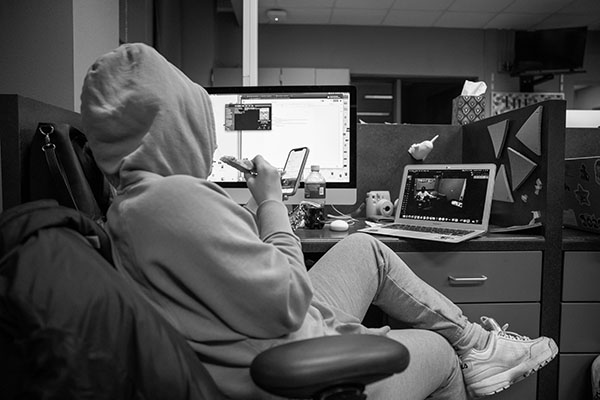
Is online really the answer?
Due to COVID-19, schools across the nation have had to alter their methods of teaching over the past year to ensure the safety of their students, staff and faculty. Many of these methods revolved around adapting traditional teaching methods to a virtual platform.
Due to this, students found that many of their professors were altering their classes to these virtual methods as well.
A common platform found at USD is Zoom. Zoom allows students and professors to interact in the same way they would a video chat. Zoom offers several features from the students’ end and the professors’ end of the call. Along with video and audio features, Zoom also provides a chat room for all to converse. It even allows professors to share their screens with students, making the lecture slide easy to read.
While this sounds like the ideal method to opt for teaching during the pandemic, do these new Zoom classes offer as many pros as they do cons?
Zoom classes are a great way to communicate while staying safe during COVID-19. However, they might not be used to their full potential.
Professors at USD each seem to have their own expectations for their Zoom classes.
An important expectation is whether or not the professor requires a video camera being turned on. This may sound like a small detail but whether students have their camera on can determine how much they are participating. Oftentimes when a student does not have their camera turned on it allows them to be more distracted and not be pressured to participate.
Professors who do not require the camera to be turned on might ask for participation through the mic or the chat room. While this influences more participation, it is still not a guarantee that students are paying attention or are going to answer.
Along with Zoom classes, drop-box features and discussion boards on D2L are now being utilized much more. If classes are not meeting in person, the most common way for professors to receive work from students and/or students to share with others is with these two features. While they definitely do the job, they take away from some interpersonal aspects shared between students and professors. These features do not allow options for asking questions about the assignments. If students have a question they have to email their professors and wait for their response or do a private Zoom meeting with them. It makes it very difficult to ask and answer assignment questions efficiently.
These features also take away from personal feedback from professors. While there are comment boxes for this purpose, not all professors use them, and if they do they might be very brief.
The lack of these interactions makes it more difficult for students to learn. Many students are finding themselves teaching much of the material to themselves in hopes that they understand the material properly. Not only have these virtual alterations taken away from personal communications between professors and students, they have also taken away traditional learning.
